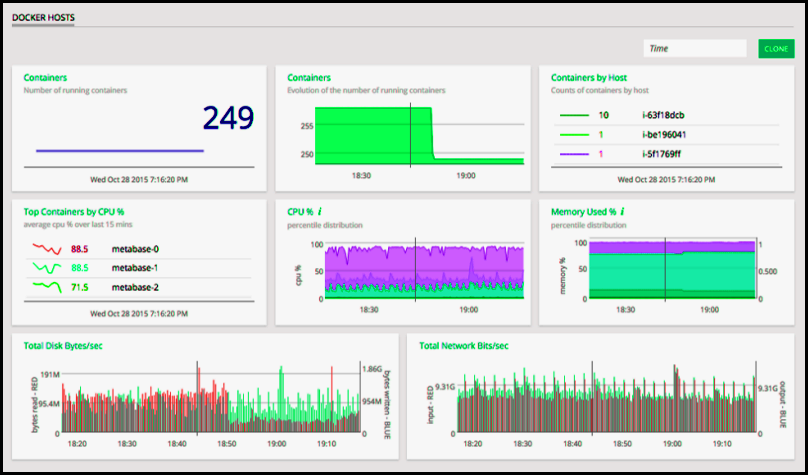 NEWS
NEWS
 NEWS
NEWS
 NEWS
NEWS
SignalFx Inc., a startup that claims to have a radical new approach to system monitoring in the age of containers and micro services, is enhancing its core platform with new features to better detect anomalies in complex infrastructure.
The venture-backed company, which emerged from stealth about a year ago, is applying big data analytics principles to systems management, saying that a system-wide view of applications and infrastructure is the only way to understand what’s really going on in today’s multi-faceted environments.
SignalFx uses data collected from thousands of sources to create aggregations like percentiles, moving averages and growth rates in near-real-time. That enables administrators to set alerts based upon anomalies rather than individual faults, which were a luxury of relatively simple legacy computing environments that didn’t have to deal with a constant influx of clients, virtual machines, patches and application changes.
“New applications don’t look like yesterday’s,” said CEO Karthik Rau. “Element managers give you visibility into one component of your stack, but today’s apps are so complex that you need to be able to look across them, build analytics across populations and alert on those patterns very quickly.”
The approach taken by SignalFx, called SignalFlow, grew out of that pioneered by Facebook, where SignalFx co-founder Phillip Liu built much of the social network’s original application monitoring systems. Instead of monitoring individual components, the service gathers data continually across a variety of metrics into a centralized analytics engine that can identify patterns that are meaningful across a range of services.
Rather than pinpointing a single fault – or even classifying an anomaly as a problem – “We’re identifying potential causes and helping customers triage them,” Rau said. Here are the new features being introduced today:
Pricing is based on the data ingestion rate. Rau said the company advises clients to budget about $15 per server per month to get a satisfactory monitoring level.
Support our mission to keep content open and free by engaging with theCUBE community. Join theCUBE’s Alumni Trust Network, where technology leaders connect, share intelligence and create opportunities.
Founded by tech visionaries John Furrier and Dave Vellante, SiliconANGLE Media has built a dynamic ecosystem of industry-leading digital media brands that reach 15+ million elite tech professionals. Our new proprietary theCUBE AI Video Cloud is breaking ground in audience interaction, leveraging theCUBEai.com neural network to help technology companies make data-driven decisions and stay at the forefront of industry conversations.